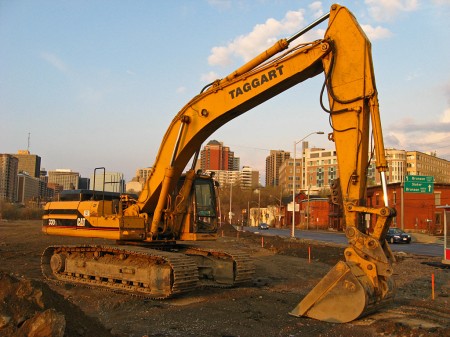
People frequently mention how, in the 17th and 18th century, lobster was so abundant in the eastern United States that it was used as a staple food for orphans, servants, and prisoners. Supposedly, Massachusetts passed a law restricting it to being served at most twice a week.
In the era of lobster scarcity, this seems incredible to us. The same basic ideas can be usefully applied to petroleum. There is a good case to be made that petroleum prices will continue to rise dramatically in the medium to long term on the basis of growing demand and flat or declining production. If that proves true, oil will be the new lobster. Where prior cheapness made it the fuel of choice in all kinds of applications, cost will gradually squeeze it out from everywhere something cheaper can do the trick. I am mostly talking about liquid petroleum here, but a similar market dynamic is likely to arise with natural gas (though it is tougher to export overseas), or even coal.
People used to grind up lobster to use as fertilizer for gardens. The oil equivalent is probably using petroleum to generate constant baseload electricity for the grid. Oil costs more to transport, burns less efficiently, and is much more import-dependent than natural gas. Oil for electricity is one of those uses that people generally switch from as soon as a viable opportunity arises. Barring some isolated communities and autocratic petro-states, I doubt anyone will be generating electricity from the grid using oil in a few decades’ time.
Moving up the value chain, there are two big ways in which oil is used: as a high-density source of energy and as a feedstock for industrial processes. In both cases, higher prices will start to produce substitution in areas where alternatives are possible. Electric lawnmowers are quieter and a whole lot less toxin-spewing than their gasoline counterparts; similarly, plug-in hybrids and all-electric vehicles are the best option for those city-dwellers who continue to demand a private vehicle.
Where only oil will do
At the top of the value chain are applications where nothing but oil will do. A fancy restaurant cannot serve a heap of flavoured tofu and call it lobster, though frozen dinner companies do something similar all the time. The essential uses for oil will ultimately relate to the two fundamental properties described above: energy density and chemical makeup.
The foremost essential market for the first remains aircraft. Ground transportation to migrate towards electric. Hopefully, someone will also be able to come up with a biofuel that solves more problems than it creates. Ships can return to coal or sails, or even be outfit with marine nuclear reactors. Planes – for the foreseeable future – will need to continue burning mostly kerosene.
The chemistry of oil makes it the basis for most of our plastics, but it is difficult for a non-expert like me to determine the degree to which that is the result of its historically low price. Certainly, permanently higher prices for oil will lead to some changes in the plastics industry. If prices rise, people will use less and will substitute less costly materials. Where possible, people will also make plastics from things other than oil. It seems likely, however, that there will be at least a few industrial processes where only oil will do.
Broader impacts
When it comes to prices for refined petroleum fuels, the world is broadly divided into three groups of states. There are those where oil has long been relatively expensive, such as in Western Europe. There are those where oil has been moderately subsidized, creating a mild culture of entitlement, such as the United States. Finally, there are those where subsidies are extreme. Gasoline in many European states is well above $2.00 a litre; in the United States, it remains around $1.00; in Iran, it is $0.09 and in Venezuela just $0.05.
In many countries within the third group, subsidies are already a huge expense. Iran may produce a lot of oil, but it refines relatively little into gasoline. As such, it needs to import gasoline in order to provide it to its citizens for pennies. A good number of them will then be tempted to re-export it and pocket the difference. That temptation can only grow in a world of ever-more-expensive oil. Governments then find themselves in the awkward position of having to either cut a popular and stabilizing policy or somehow finance a growing drain on the public purse.
While it is extremely difficult to predict what the overall effects of continually rising oil prices would be, two conclusions do seem highly probable. Firstly, uses of oil that produce little value or which could easily switch to another fuel will be priced out of the oil-buying market by high margin options with few substitutes. Secondly, more stress will develop in relation to wildly different prices for refined fuels, especially when it comes to states like Iran that subsidize domestic consumption heavily.
[Update: 8 March 2010]. BuryCoal.com is a site dedicated to making the case for leaving coal, along with unconventional oil and gas, underground.







